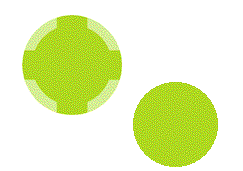
ZENO Mediation System
GMD - Forschungszentrum Informationstechnik GmbH, AI Research, Hans Voss
It
is not the role of a mediating system to rigidly enforce formal rules or to help managers control or monitor the
performance of employees. On the contrary, the role of trusted third parties, assisted by a Zeno mediation
system, is to remain neutral and help assure that the interests and goals of all members of a group, regardless of
status, are respected and appreciated. Special emphasis will be given to security, authenticity and privacy issues.
Scenario
The intended prototype application for Zeno is to assist government and businesses with the retrieval, use and
reuse of information, practices and knowledge in cooperative, distributed planning procedures requiring access
to geographical information. Application scenarios include that of a company or government trying to decide
where to locate a new factory or agency, a community deciding how to partition the lots of a new housing
district, or neighboring countries planning the path of a highway between two cities.
System Architecture
The first version of Zeno will provide basic issue-based information services to the World-Wide Web. By filling
out a WWW form, a group of users my set up a mediation system to discuss a set of related issues. The system
will then set up an account for
this discussion and create an email address for the mediating system responsible for managing this account. A
copy of each message sent to the group should also be sent to mediator, at this address. If the message has a
particular format, as described below, the mediation system will automatically create and install a set of World
Wide Web pages, with appropriate hyperlinks to parts of the previous messages of the discussion.
Alternatively, a group may choose a (human) editor to be responsible for adding this information. In this case,
unstructured messages will be automatically forwarded to the editor, who would add this information and
return the marked-up version to the mediation system for further processing as usual.
In this first version of Zeno, messages can be any HTML (Hypertext Markup Language) document, which is the
standard format of the World Wide Web. Zeno messages may use either plain HTML, or an extended Zeno
version with elements for marking the argument structure of the message, to identify such things as claims,
positions, issues, and arguments. Zeno messages, like HTML, can be created with any text editor, although
special purpose editors are available to facilitate this task.
The only tools required to participate in a Zeno mediated discussion are Internet access, a World Wide Web
browser, and any Internet electronic mail program. Conveniently, some Web browsers also include built-in
electronic mail, which makes it possible to respond to a point directly while browsing the arguments in a Zeno
supported discussion on the Web.
Organizational Details
Zeno is participating in the http://arti.vub.ac.be/www/geomed/geomed.html" Geographical Mediation Systems
(GEOMED-F) feasibility project sponsored by the European Union. (DG XIII, Telematics, Information
Engineering Project No. 174). Other members of the GEOMED consortium include LIFIA - Institut IMAG,
Grenoble, France; TNO Building and Construction Research, Delft, The Netherlands; and the Artificial
Intelligence Laborartory, Vrije Universiteit Brussel, Brussel, Belgium.
| Thyroidea
| Live-Robots
| Chaos Cube
| Multimedia Teleschool
| School Net
| MediaTel
| Philips Dictation Systems
| Knowbotic Interface Project
| Comenius
| SimNerv
telepolis@mlm.extern.lrz-muenchen.de
